
Moving Averages 101: A Beginner’s Guide to Trend Trading
 ACY Securities - Jasper Osita
ACY Securities - Jasper OsitaGoal of This Lesson

To help you understand what moving averages are - in plain English - and how you can start using them to read trends and make smarter trading decisions (without getting confused by math or formulas).
What’s a Moving Average?
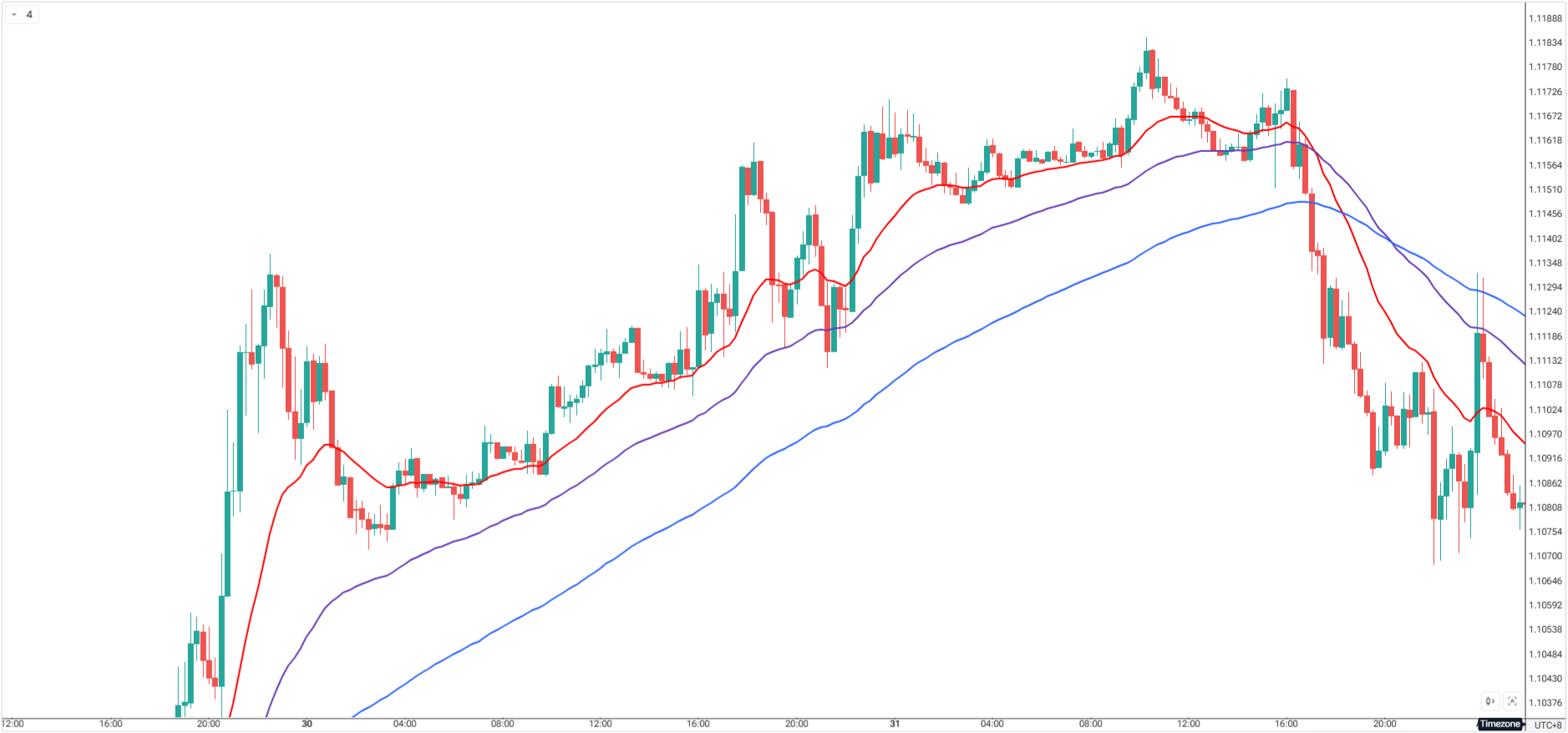
Imagine price is like a heartbeat. It goes up and down all the time.
A moving average (MA) helps calm the noise.
It shows you the “average” price over the last few candles - like a smoother line that helps you see the overall direction the market is going.
If the line is going up, price is likely trending up.
If it’s going down, price is likely trending down.
If it’s flat, the market might be ranging (sideways).
Why Moving Averages Helps

As a beginner, you don’t need to predict the future.
You just need to follow where the price is already going.
That’s where moving averages help.
- They show the overall direction (trend)
- They act like dynamic support/resistance
- They help you stay in good trades longer
- They keep you from trading against momentum
A Simple Analogy: Moving Averages = Your Trading GPS

Think of the market like a road trip:
- Price is the traffic (messy and unpredictable)
- You are the driver
- A moving average is your GPS - not perfect, but it shows you the general direction
When the MA is pointing north, you follow it. When it starts to curve south, you slow down or turn around.
What Do the Numbers Mean?
Let’s say you see a 20 EMA or a 50 SMA - what does that mean?
The number just means:
“We’re averaging the price of the last 20 or 50 candles.”
Smaller numbers (like 9 or 20) = faster, more reactive
Bigger numbers (like 50 or 100) = slower, more stable
The 2 Most Common Types of MAs (You Only Need These for Now)
1. SMA (Simple Moving Average)
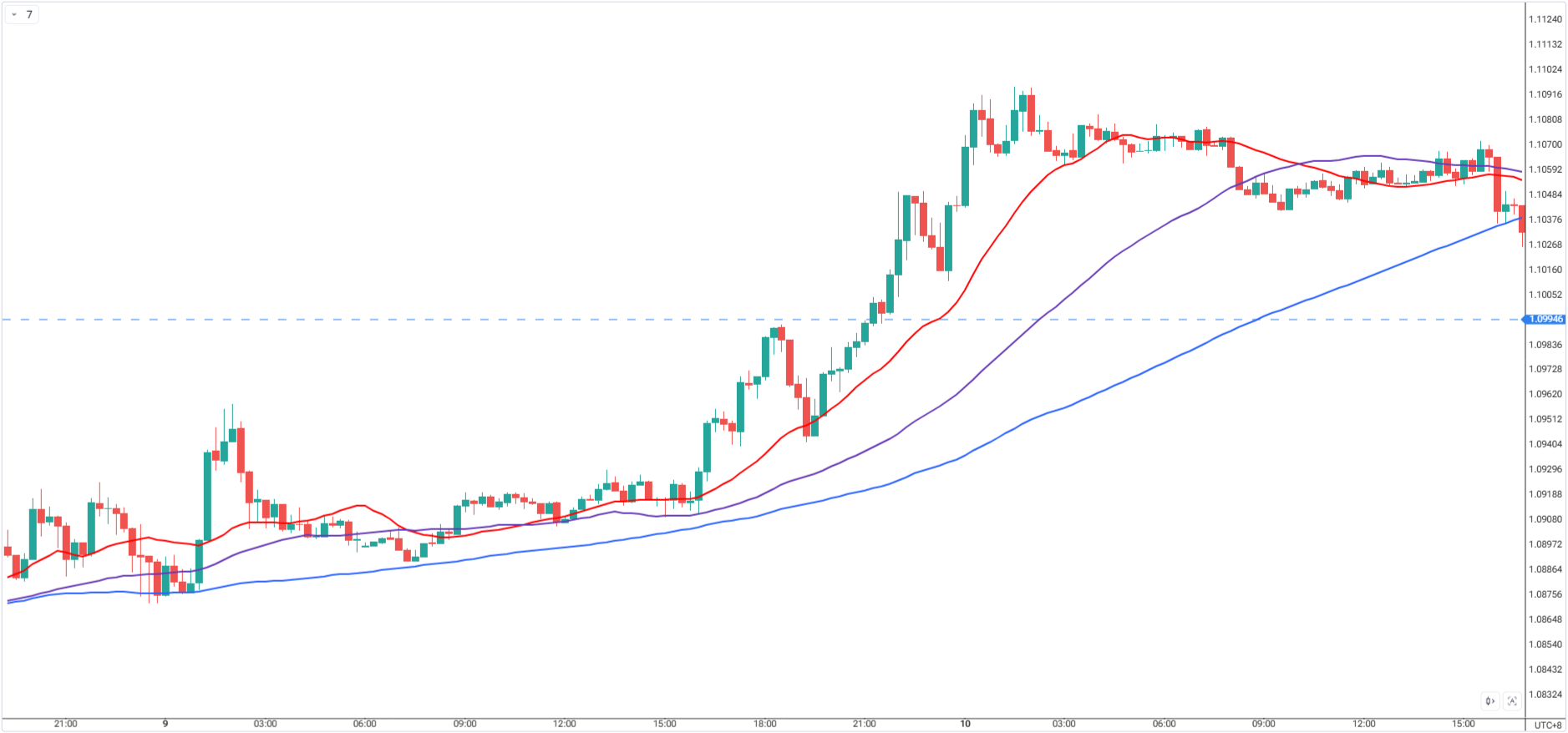
- Adds up past prices and divides by how many there are
- Smooth, stable line
- Great for seeing the big picture trend
2. EMA (Exponential Moving Average)
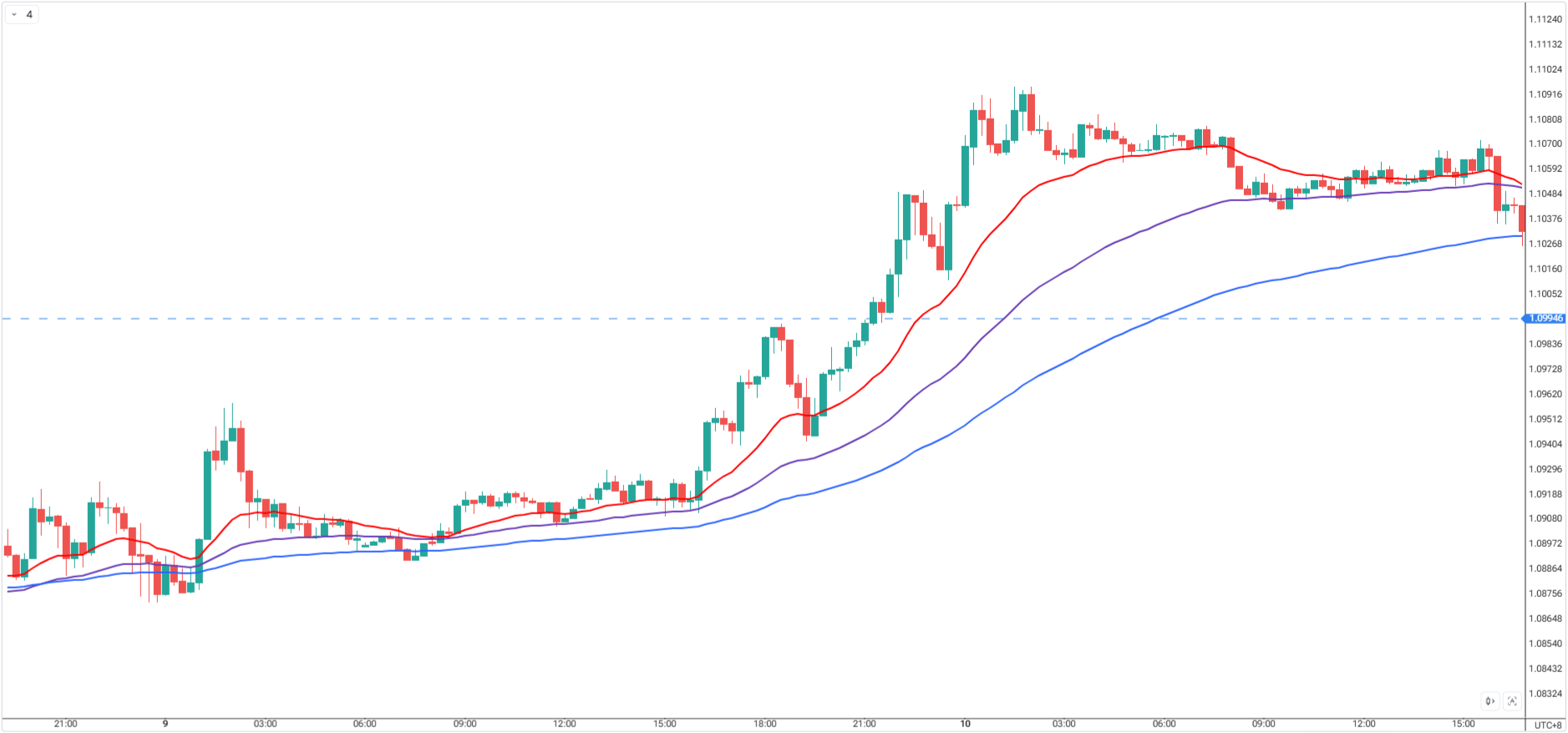
- Gives more weight to recent prices
- Reacts faster to new moves
- Great for finding quick momentum changes
Beginner Tip:
Use EMA for faster trades, SMA for slower trades.
Most traders use both.
How to Use Moving Averages (Without Overthinking It)
Here’s a super simple way to start using MAs in your chart:
Step 1: Add a 20 EMA, 50 EMA, & 100 EMA to your chart
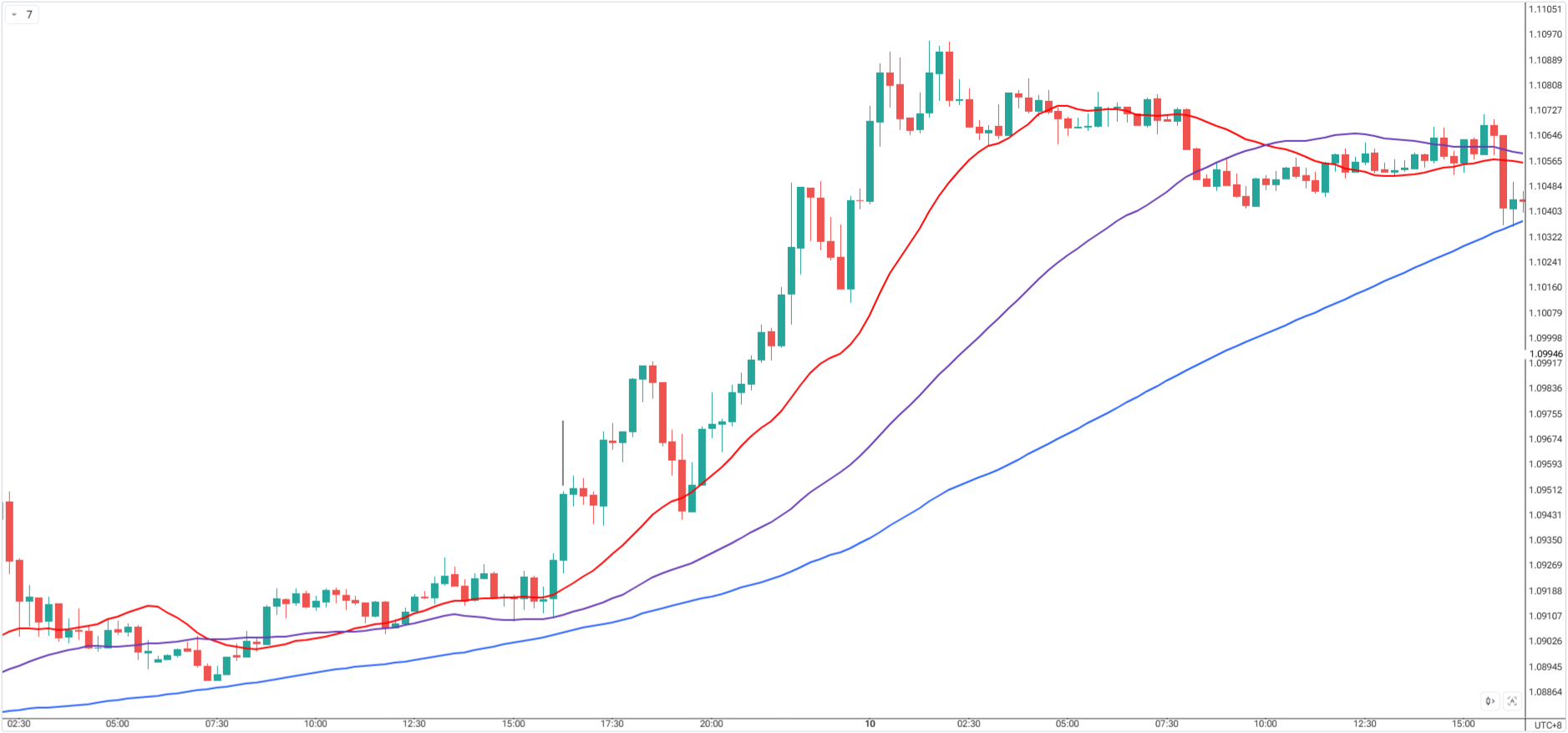
- These help you see short-term and medium-term trend
Step 2: Is Price Above MA or Below?
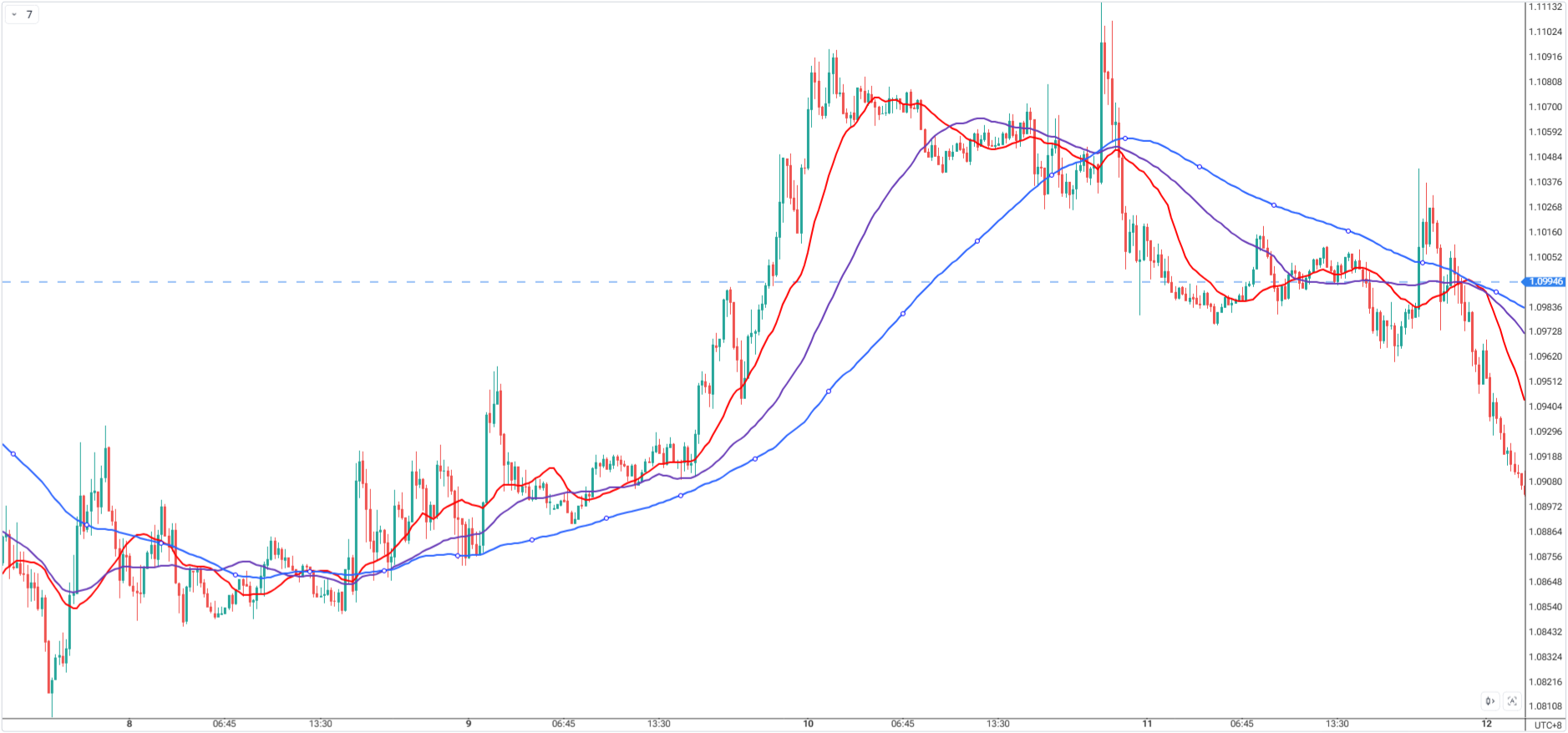
- Above? Market is likely trending up
- Below? Market is likely trending down
- Criss-Cross? Stay out - market might be ranging
Step 3: Use it as a guide, not a trigger
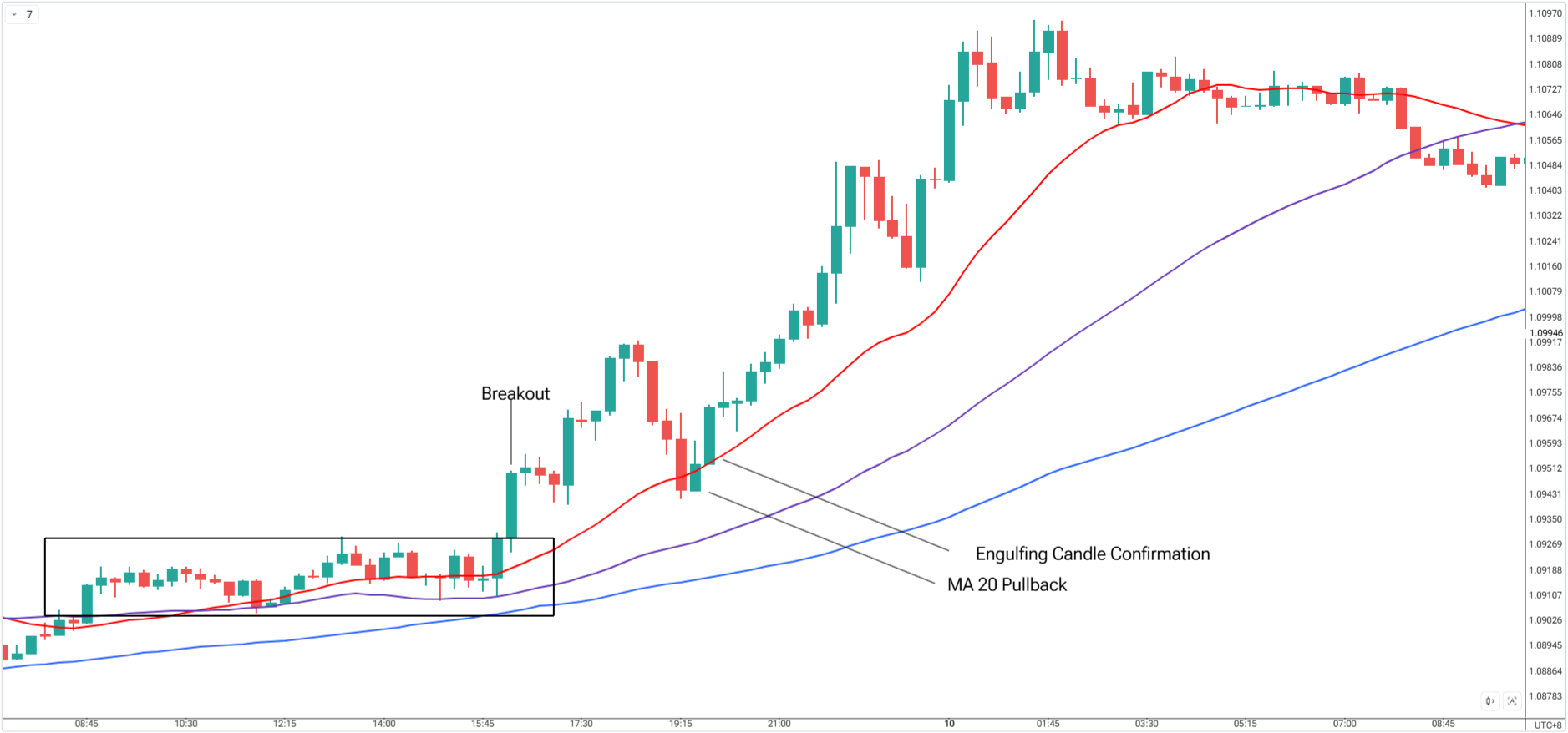
- Don’t enter just because price touches the MA
- Wait for a price action breakout + pullback to the MA + confirmation candle
- Combine with support/resistance or structure
Common Mistake to Avoid
“Price touched the moving average… time to buy!”
Nope. That’s how beginners get trapped.
Think of MAs like a weather report.
They don’t make decisions for you - they give context.
Pro-Tip: Price action must confirm first through a breakout. Moving averages will guide the way.
Beginner-Friendly MA Settings to Start With
| Type | Period | Use For |
|---|---|---|
| 9 EMA | Fast trends | Scalping or quick moves |
| 20 EMA | Medium trend | Day trading direction |
| 50 SMA | Big picture | Swing trading / filter |
| 100 SMA | Macro trend | Major support/resistance |
Tip: Start with 20 EMA and 50 EMA — simple, effective, and enough.
Key Takeaways
- Moving averages help you see the trend clearly
- EMA = reacts fast, SMA = more stable
- Start with 20 EMA + 50 EMA and just observe how price interacts with them
- Use MAs for direction and confidence, not as signals alone
- The goal is to trade with the trend, not against it
Final Thought

Moving averages are like your first training wheels in trading.
They won’t give you perfect signals.
They won’t predict the market.
But they will help you see the trend, follow momentum, and avoid emotional decisions.
Start simple. Watch how price respects the 20 EMA or bounces off the 50 SMA.
You don’t need to trade every move - just trade in the direction that makes sense.
Over time, you’ll learn how to combine MAs with price action, structure, and confidence.
That’s when everything starts to click.
Call to Action
Here’s your challenge this week:
- Add a 20 EMA and 50 EMA to your favorite chart.
- Spend 15 minutes each day observing how prices behave around them.
- Write down what you observe - pullbacks, rejections, breakouts, or nothing at all.
You don’t need to trade yet.
Just build the eye. Train your pattern recognition. Trust the process.
Start Practicing with Confidence - Risk-Free!
Open a free demo account today and experience institutional-grade spreads, lightning-fast execution, and all the tools you need to grow as a trader.
- Trade forex, indices, gold, and more
- Access ACY, MT4, MT5, & Copy Trading Platforms
- Practice with zero risk
It’s time to go from theory to execution - risk-free.
Create an Account. Start Your Free Demo!
Check Out My Contents:
Strategies That You Can Use
How To Trade & Scalp Indices at the Open Using Smart Money Concepts (SMC)
How to Trade Breakouts Effectively in Day Trading with Smart Money Concepts
Complete Step-by-Step Guide to Day Trading Gold (XAU/USD) with Smart Money Concepts (SMC)
The Power of Multi-Timeframe Analysis in Smart Money Concepts (SMC)
Forex Trading Strategy for Beginners
Mastering Candlestick Pattern Analysis with the SMC Strategy for Day Trading
Mastering Risk Management: Stop Loss, Take Profit, and Position Sizing
How to Use Fibonacci to Set Targets & Stops (Complete Guide)
RSI Divergence Trading Strategy for Gold: How to Identify and Trade Trend Reversals
Stochastics Trading Secrets: How to Time Entries in Trending Markets using Stochastics
Gold Trading Stochastics Strategy: How to Trade Gold with 2R–3R Targets
RSI Hidden Divergence Explained: How to Spot Trend Continuations Like a Pro
How To Trade News
Why Smart Money Concepts Work in News-Driven Markets - CPI, NFP, and More
How to Trade NFP Using Smart Money Concepts (SMC)-A Proven Strategy for Forex Traders
How to Trade CPI Like Smart Money - A Step-by-Step Guide Using SMC
Learn How to Trade US Indices
How to Start Trading Indices and Get into the Stock Market with Low Capital (2025 Guide)
Best Indices to Trade for Day Traders | NASDAQ, S&P 500, DAX + Best Times to Trade Them
How To Trade & Scalp Indices at the Open Using Smart Money Concepts (SMC)
NAS100 - How to Trade the Nasdaq Like a Pro (Smart Money Edition)
How to Trade CPI Like Smart Money - A Step-by-Step Guide Using SMC
Why Smart Money Concepts Work in News-Driven Markets - CPI, NFP, and More
How to Start Trading Gold
How to Swing Trade Gold (XAU/USD) Using Smart Money Concepts: A Simple Guide for Traders
Complete Step-by-Step Guide to Day Trading Gold (XAU/USD) with Smart Money Concepts (SMC)
The Ultimate Guide to Backtesting and Trading Gold (XAU/USD) Using Smart Money Concepts (SMC)
Why Gold Remains the Ultimate Security in a Shifting World
How to Trade Japanese Candlesticks
How to Trade Candlestick Patterns with High Probability: A Complete Guide for Beginners
The Top Japanese Candlestick Guide: What is an Engulfing Pattern and How to Trade It?
Piercing Pattern Candlestick Explained: How to Trade It - Step-By-Step Guide
Morning & Evening Star Candlestick Patterns – How to Trade Market Reversals with Confidence
How to Start Day Trading
5 Steps to Start Day Trading: A Strategic Guide for Beginners
8 Steps How to Start Forex Day Trading in 2025: A Beginner’s Step-by-Step Guide
3 Steps to Build a Trading Routine for Consistency and Discipline - Day Trading Edition
The Ultimate Guide to Understanding Market Trends and Price Action
Trading with Momentum: The Best Trading Session to Trade Forex, Gold and Indices
Learn how to navigate yourself in times of turmoil
How to Identify Risk-On and Risk-Off Market Sentiment: A Complete Trader’s Guide
How to Trade Risk-On and Risk-Off Sentiment - With Technical Confirmation
The Ultimate Guide to Understanding Market Trends and Price Action
Want to learn how to trade like the Smart Money?
Why Smart Money Concepts Work: The Truth Behind Liquidity and Price Action
Mastering the Market with Smart Money Concepts: 5 Strategic Approaches
Mastering Candlestick Pattern Analysis with the SMC Strategy for Day Trading
Understanding Liquidity Sweep: How Smart Money Trades Liquidity Zones in Forex, Gold, US Indices
The SMC Playbook Series Part 4: How to Confirm Trend Reversal & Direction using SMC
The SMC Playbook Series Part 5: The Power of Multi-Timeframe Analysis in Smart Money Concepts (SMC)
Fair Value Gaps Explained: How Smart Money Leaves Footprints in the Market
The Best Time to Use Smart Money Concepts (SMC): Why Timing Is Everything in Trading SMC
How to Trade the London Session Using Smart Money Concepts (SMC)
Trading Psychology and Continuous Improvement Contents
The Mental Game of Execution - Debunking the Common Trading Psychology
5 Steps to Backtest a Trading Strategy with AI: A Step-by-Step Guide
Managing Trading Losses: Why You Can Be Wrong and Still Win Big in Trading
The Hidden Threat in Trading: How Performance Anxiety Sabotages Your Edge
Why You Fail in Trading: You Don’t Have Enough Capital to Survive
Why 90% of Retail Traders Fail Even with Profitable Trading Strategies
The Top 10 Best Trading Books That Changed My Mindset, Strategy & Performance
Discovering Your Trader Profile: What Kind of Trader Are You?
Follow me for more daily market insights!
Jasper Osita - LinkedIn - FXStreet - YouTube
This content may have been written by a third party. ACY makes no representation or warranty and assumes no liability as to the accuracy or completeness of the information provided, nor any loss arising from any investment based on a recommendation, forecast or other information supplies by any third-party. This content is information only, and does not constitute financial, investment or other advice on which you can rely.
LiquidityFinder
LiquidityFinder was created to take the friction out of the process of sourcing Business to Business (B2B) liquidity; to become the central reference point for liquidity in OTC electronic markets, and the means to access them. Our mission is to provide streamlined modern solutions and share valuable insight and knowledge that benefit our users.
If you would like to contribute to our website or wish to contact us, please click here or you can email us directly at press@liquidityfinder.com.
